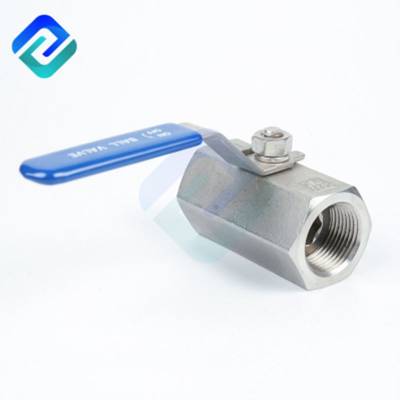Ball valves are very popular products in the plumbing industry. They can prevent water from flowing through the pipe. There are two main materials for metal ball valves. Brass Ball Valve and stainless steel ball valve. With the increasing popularity of stainless steel pipe fittings in non-industrial applications, stainless steel ball valves continue to receive more and more attention.
Stainless steel is a more corrosion resistant material than brass. This is an important issue that requires attention, especially when it comes to valves. Because valves are used to open and close, corrosion can cause major problems. If there is too much corrosion, it may cause the ball valve to crack or fail to move.
Stainless Steel Ball Valves have better tolerance to more demanding water types. This will ensure a longer valve life. If you want to add corrosion resistance to the system, you should use an all stainless steel system.

Stainless Steel Ball Valves
Generally speaking, the pressure rating of stainless steel ball valves is higher than that of brass ball valves. For example, on a 1-inch model, the pressure rating of a standard brass ball valve may be 600 PSI. For the 1-inch model, the pressure rating of a standard stainless steel ball valve may be 1000 PSI.
When you enter commercial, industrial, or water well applications, you may need to have more pressure through the valve. This is where stainless steel ball valves are widely used.
One of the greatest advantages of stainless steel is that it can be used in many applications. With the overall competitiveness of stainless steel, it has gained popularity in more common pipe applications. This is a supplement used in many industrial and commercial applications.
The reason why stainless steel is becoming more and more popular among traditional pipes is the rising price of lead-free brass. When many states and provinces in North America began to implement lead-free laws, the popularity of lead-free brass was also increasing. The price difference between leaded brass and lead-free brass is quite large, which makes it comparable to stainless steel, even though it is expensive.
Currently, the price difference between lead-free brass and stainless steel is very similar, and in some cases, stainless steel is actually cheaper. In fact, the ability to integrate it into more and more applications is very obvious. One thing to remember is that the use of stainless steel is different from brass and needs to be sealed in a specific way.
For many types of pipelines, wells, and industrial applications, stainless steel ball valves are a good choice. Yes, this usually means installing a stainless steel system, so when you understand all the advantages of stainless steel ball valves, why not use them?
If you have more questions or want to buy, please feel free to contact the Stainless Steel Ball Valve Supplier
Copyright:@2020-2021
Comments Please sign in or sign up to post.
0
0 of 500 characters used